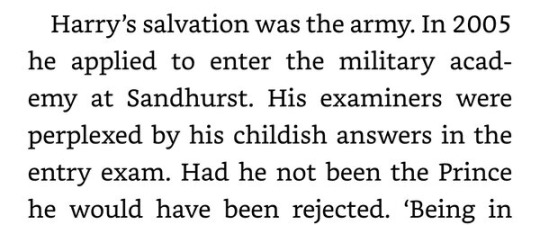#Sandhurst
Text
The day Princess Anne was almost kidnapped on The Mall — 50 years on
On this day 50 years ago, 23-year-old Princess Anne found herself fighting off a gunman as her bodyguard and driver lay wounded beside her. Emma Loffhagen takes a deep dive into the disturbing day one of the most senior royals was almost kidnapped.

By Emma Loffhagen
20 March 2024
“Your daughter has been kidnapped. The following are conditions to be fulfilled for release.”
In March 1974, Ian Ball used a rented typewriter to haphazardly type a letter intended for the then-head of state, Queen Elizabeth II.
Ball, 26, a funeral home worker, demanded £3 million — to be paid in £5 notes — in exchange for the return of the Queen’s daughter, Princess Anne.
After becoming fixated with the 23-year-old princess, he spent two years hatching an elaborate plan to kidnap her.
Today, March 20, marks the 50th anniversary of Ball’s kidnap attempt — one of the most bizarre and disturbing episodes in British royal history.

A “loner,” Ball had been inspired to hatch his elaborate kidnap plot by the novel Day of the Jackal.
He wanted to follow in the footsteps of the book’s hero, the contracted assassin the Jackal.
“He was a very strange man,” Ball’s neighbour later said. “The only time he ever went out was when he went down to the launderette or went out for some food.”
It was thought that he had developed a “fixation” on the royal, whipped up by the widespread and lavish coverage of her wedding to Captain Mark Phillips the previous year.
As part of his plan, Ball had moved from his run-down flat in Bayswater to a lush rented house in Fleet, Hampshire.
It was only a few miles from Sandhurst, where Anne lived with her then-husband Phillips.
After a quick phone call to the Buckingham Palace press office, Ball knew which engagements and events Anne attended each week.
He rented a car under the alias John Williams, stocking the boot with Valium tranquilisers and two pairs of handcuffs.
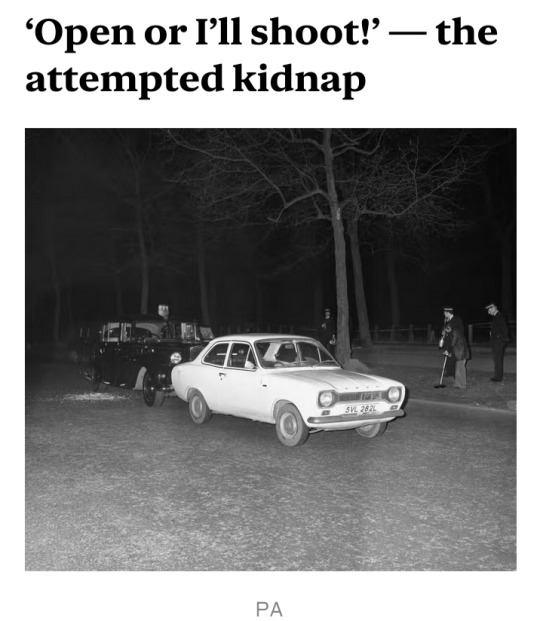
On the evening of 20 March 1974, Anne was travelling back to Buckingham Palace in an Austin Princess limousine.
She had attended a screening of Riding Towards Freedom, a documentary by the charity Riding for the Disabled.
Captain Phillips, her bodyguard James Beaton, and her lady-in-waiting Rowena Jane Brassey, were also in the car driven by royal chauffeur Alexander Callender.
At around 8pm, as the group drove up The Mall, a white Ford Escort swerved in front of the limousine, forcing Callender to stop.
Then a 31-year-old inspector, Beaton, who had been Anne’s bodyguard for a year, got out to investigate.
“I thought it was somebody who wanted to be a pain in the neck,” he later said. “There was no hint of what was to happen.”

Suddenly, a bearded man with light red hair jumped out of the vehicle and pulled out two handguns, smashing the passenger window with the butt of one.
Beaton had not even had the chance to pull out his weapon when he was shot in the shoulder.
He then attempted to fire back at Ball — but missed. Upon a second attempt, his gun — a Walther PPK — jammed.
Ball turned to the passenger door behind the driver’s seat and started shaking it. Anne was sat on the other side. “Open, or I’ll shoot!” he shouted.
As the princess and Captain Phillips desperately tried to hold the door closed, Anne’s lady-in-waiting crawled out of the door on the passenger side.
Beaton got back in the car, placing himself between the couple and their assailant.
Ball shot into the car, and Beaton’s hand deflected the bullet.
He shot the bodyguard a third time, hitting Beaton in the abdomen and causing him to fall from the vehicle.
“I felt tired and very drunk, although I hadn’t been drinking,” Beaton later told police. “I just wanted to lie down.”
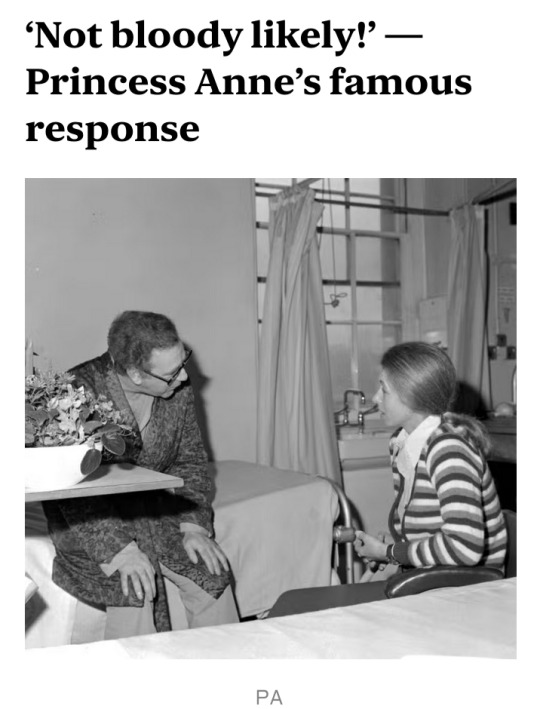
Callender stepped out to confront the gunman, but Ball shot him in the chest and he fell back into the car.
Pulling the door open, Ball grabbed Anne’s forearm as her husband held on to her waist.
“Please, come out,” Ball reportedly told the princess. “You’ve got to come.”
As the pair struggled over Anne, her dress ripped, splitting down the back, which she later recalled prompted her to “lose her rag.”
But, rather than panic, she had what she described as a “very irritating conversation” with her potential kidnapper.
Unbelievably calm despite the commotion, Anne famously replied: “Not bloody likely!”
In an interview with the late television presenter Michael Parkinson, she recalled:
“He [the gunman] opened the door and we had a discussion about where — or where not — we were going to go.
“I said I didn’t think I wanted to go. I was scrupulously polite because I thought it would be silly to be too rude at that stage.”
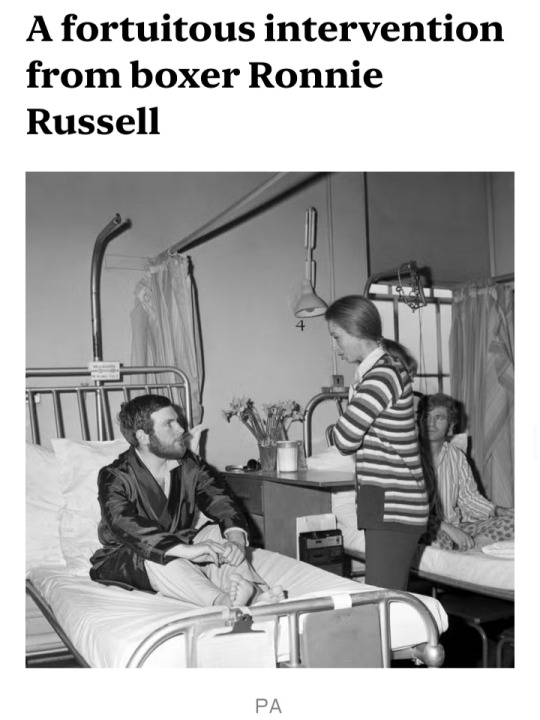
A nearby tabloid journalist, Brian McConnell, arrived on the scene.
Recognising the limo’s insignia, he realised the commotion must have involved a royal family member.
“Don’t be silly, old boy,” he told Ball. “Put the gun down.”
Ball responded by shooting him too and McConnell collapsed bleeding onto the road.
A man named Ronnie Russell drove past at this point.
He was on his way home to Strood, Kent, from working as an area manager for a cleaning company in London.
In a stroke of incredible luck, Russell happened to be a former boxer. He had cut his cloth at the Repton Club in east London, an infamous venue sponsored by the notorious Kray twins.
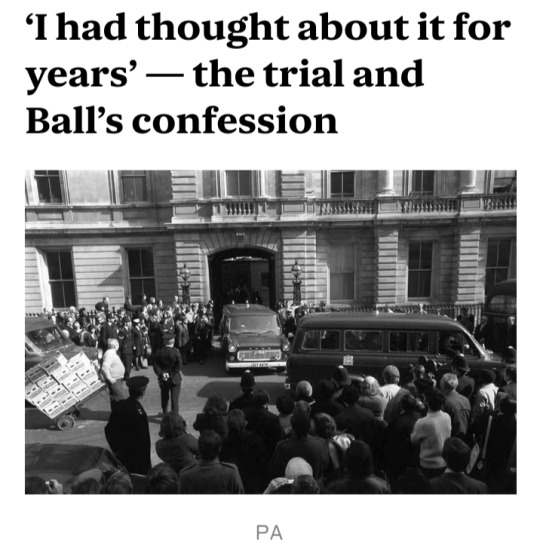
Jumping out of the car, Russell punched Ball twice in the head before leading Anne and her lady-in-waiting away from the attacker.
He later explained that he “did not like bullies,” which prompted his decision to intervene.
Despite being injured, Ball still shot the first police officer to arrive on the scene, Constable Michael Hills, 22, before running off.
Detective Constable Peter Edmonds, who answered Constable Hills’ radio request for backup, chased Ball down The Mall and through St James’s Park before tackling him on the ground.

At Ball’s Old Bailey trial in May 1974, more details came to light about the plot.
Ball kept his head lowered for most of the proceedings, only uttering the word “guilty” to confirm the charges of attempted murder and kidnapping.
In his pocket, detectives had discovered the kidnap note addressed to the Queen, which demanded the £3 million ransom (the equivalent of £26 million today), a free pardon, and a plane to fly him to Switzerland.
He had planned to take the princess to a central London property he had rented under an alias.
In a police interview, Ball also said he believed Anne would be an easy target after ascertaining her whereabouts by phoning the Buckingham Palace press office.
“I had thought about it for years,” he said. “She would have been the easiest. I have seen her riding with her husband.”
Ball also showed no remorse for having shot three men on the night of the attempted kidnap.
“They were getting in my way so I had to shoot them,” he said. “Well, the police, that's their job. They expect to be shot. I took a chance of getting shot so why shouldn't they?”
He added: “I suppose I’ll be locked up for the rest of my life. I am only sorry I frightened Princess Anne. There is one good thing coming out of this: you will have to improve on her protection.”
Ball was diagnosed with schizophrenia following the trial and sentenced to a mental health facility under the Mental Health Act, “without limit or time."
He remains in the Broadmoor Hospital in Berkshire to this day.
The facility has been home to a series of notorious criminals, including serial killer Peter Sutcliffe and London gangster Ronnie Kray.

Immediately after the attack, the royals ceased having only one protection officer.
When Anne visited Beaton in hospital, “she turned up with two policemen,” her bodyguard said. “From then on, that’s what it was.”
“I had nothing…There was no back-up vehicle,” Beaton told The Times separately.
“The training was non-existent; but then again, [we thought] nothing was going to happen. They are highly specialised now, highly trained.”
Beaton continued to work for Anne for another five years — before the Queen employed him.
After Beaton’s weapon jammed, the type of guns used by bodyguards were also changed: “The Walthers were got rid of overnight.”
Beaton was honoured for his bravery, receiving the George Cross — the UK’s highest civilian honour for gallantry.
Russell also received the honour. In a 2006 interview, Russell recalled what Queen Elizabeth said as she presented his George Medal:
“The medal is from the Queen of England, the thank you is from Anne’s mother.”
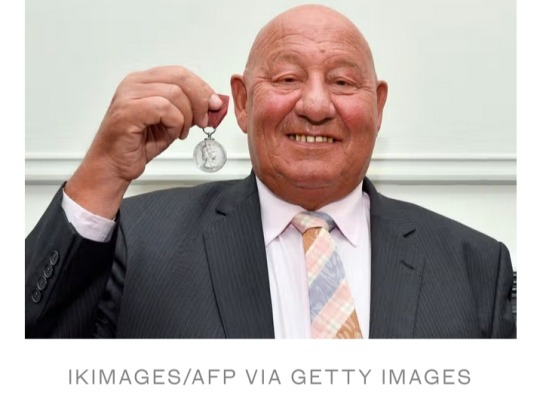
#Princess Anne#Princess Royal#Queen Elizabeth II#Captain Mark Phillips#British Royal Family#Ian Ball#Inspector James Beaton#Day of the Jackal#Buckingham Palace#Sandhurst#Riding Towards Freedom#Riding for the Disabled#Rowena Jane Brassey#Walther PPK#Alexander Callender#Michael Parkinson#Brian McConnell#Ronnie Russell#Repton Club#Constable Michael Hills#Detective Constable Peter Edmonds#The Mall#St James’s Park#schizophrenia#Broadmoor Hospital#George Cross
52 notes
·
View notes
Text

Catherine Middleton at the Sovereign's parade, at the Royal Military Academy Sandhurst, December 2006.
#british royal family#kate middleton#princess of wales#duchess of cambridge#prince william#Sandhurst#brf#royals#british royals
60 notes
·
View notes
Photo

The reward of one duty is the power to fulfill another.
- George Eliot
Like grandmother, like grandson. The future of the monarchy is in safe hands.
**Photo: HM Queen Elizabeth II walks past William at Sovereign’s parade, the passing out ceremony of commissioned army officers at the Royal Military Academy, Sandhurst.
#eliot#george eliot#quote#monarchy#HM Queen Elizabeth II#elizabeth II#britain#prince william#sandhurst#british army#succession#duty#service#sacrifice
80 notes
·
View notes
Text
"Prince Harry’s claim the Army taught him to dehumanise the 25 Taliban he killed has been challenged by his Sandhurst classmates."
17 notes
·
View notes
Text
youtube
#youtube#militarytraining#MilitaryTraining#Sandhurst#RoyalMilitaryAcademy#TacticalTraining#LiveFire#Germany#OfficerCadets#Army#Soldiers#CombatTraining#MilitaryLife#Military#TrainingExercise#Gunfire#Warriors#ArmyTraining#Battlefield#Tactics#Firearms#Warfare
0 notes
Text
The Obelisk, Camberley, Surrey
In the town of Camberley a truncated tower stands on a hilltop surrounded by trees. This is the surviving remnant of an elegant tower, built by John Norris, which stood on the open country known as Bagshot Heath. It has been known since its earliest days as ‘The Obelisk’, for in the 18th century the term was sometimes used to describe any tall, tapering structure. Although only a sorry stump…

View On WordPress
#Bagshot Heath#Camberley#Camberley Obelisk#Dashwood#Edward Henry Clode Braddon)#Hawley House#John Norris#John Palmer Brabazon#Norris&039;s Whim#Royal Military Academy#Sandhurst#Surrey Heath Museum#West Wycombe
0 notes
Text
Life is a battlefield : 1966 : Barossa Common & Sandhurst Royal Military Academy
My childhood playground was a warzone. While my classmates were likely splashing around in inflatable pools in the safety of their back gardens, I would be on my bike following tanks on manoeuvres, riding alongside battalions marching across the countryside, and waving at camouflaged soldiers hiding in trenches with guns. Occasionally they waved back! Nights were regularly punctured by the sound of machine-gun fire and exploding shells, while my bedroom curtain would be illuminated by phosphorous flares. Outside our house, tanks would roll along the street between daytime traffic. Nobody took any notice. This was all perfectly normal.
I shared a bedroom with my younger brother, his bed under the window, mine opposite against a wall. On my bedside table were: a hyacinth bulb in a square cardboard box that I had to water daily up to the line printed on a little transparent side window; a tray of watercress seeds on blotting paper for a school project; and a little transistor radio with a white earpiece to listen to 'Radio Luxembourg' at night. Taped to the wall alongside the bed was a world map I had sent for from 'The Daily Express', on which every day I plotted the position of Francis Chichester’s boat 'Gipsy Moth IV' on its record-breaking solo round-the-world voyage. Under my bed was a line of Easter egg boxes which I rationed so that I could eke out my daily chocolate intake until the approach to Christmas.
Hidden against the wall behind the Easter eggs was a line of anonymous brown boxes in which I stored ammunition I had collected whilst biking through the warzone. More than a thousand identical brass-coloured bullet casings stacked in neat rows and, in an odds-and-ends box, a hoard of variously shaped larger artillery shells. Nobody knew about my hobby and they never would because my mum had little inclination to clean beneath our beds. I had no understanding then, but now I realise that most of the cartridges were blanks and had a tell-tale indentation showing they had been fired, though some bullets and shells remained unmarked and were probably still live.
Our house was 180 metres from the corner of Old Green Lane where two tarmacked, fenced tennis courts were hidden from the road by thick foliage. Their gates were never locked, enabling me and my mates from our street to bike there and mess around with racquets and tennis balls ‘borrowed’ from our parents. Only once did army officers dressed in whites arrive unexpectedly and admonish us for using military facilities. That was the most trouble we encountered the many times our mothers saw us off after breakfast during school holidays and weekends, not expecting us to return until ‘tea’ at the end of the afternoon. Anything could have happened to us … but it didn’t.
Although the front entrance to Sandhurst Royal Military Academy was manned, the back entrances were open, allowing non-Army residents to wander through the grounds. Every winter, my mother and I almost froze to death standing on the shore of one of the Academy’s two lakes while my father insisted on showing off his ice-skating prowess, learned as part of my parents’ earlier, unfulfilled plan to emigrate to Canada. My mother would occasionally swim in the indoor heated swimming pool where, if challenged, she would claim to be an officer’s wife, with me in tow expected to play the part of the officer’s son. Security was non-existent prior to the IRA’s mainland bombing campaign in 1973.
Adjacent to Sandhurst was ‘The Common’, 4192 acres of wooded common land shared by Camberley locals for recreation and the British Army for war games. The land was criss-crossed by perfectly straight paths and wide unmade roads dating from Roman times, though the ‘Caesar’s Camp’ archaeological site within was eventually determined to be an earlier Iron Age hill fort. One part of this vast landscape was where my father struggled to teach my mother to drive, me sandwiched between them, terrified on the front seat of our American Rambler station wagon. It was the blind leading the blind as my father had never taken a driving lesson. Conscripted to the Suez, he was ordered to drive trucks across the Egyptian desert, which he did as fast and aggressively as possible for two years. Demobbed with a British driving licence, his style of driving refused to change. How my mother subsequently passed her driving test I never understood.
The Common seemed enormous to me, bordered by the scary Broadmoor Hospital to the west and Windsor Castle to the east, eleven miles from our house, a destination my mother said she had reached on foot as a child accompanying her father. The only human imposition evident on the landscape was a single line of electricity pylons that crossed it, whose cables sizzled as you passed underneath. This noise scared me after having seen my father thrown across our living room when he recklessly drilled a hole in the wall above our house’s electricity fuse board. Now, whenever I watch 1960’s/1970’s Hammer historical movies with horse drawn carriages speeding along straight unmade routes through thick wooded land, I recognise The Common that I came to know so well.
Having access to so much wilderness so nearby to explore was idyllic as a child. There was the ‘Star Post’ raised lookout junction where ten perfectly straight paths intersected. There were army assault courses with tyres on ropes, wooden climbing frames alongside ditches full of water if you fell off. There were small ruined buildings that we could run in and around, chasing each other. There were trenches we could hide in, hoping to frighten a passing dogwalker or biker. Some parts were densely wooded while others were covered with undergrowth, offering scope for all sorts of games. Most of all, there were long straight unmade roads where we could reach great speeds on our bikes without the worry of traffic … except for the odd tank.
Before adventuring onto The Common, we would habitually meet up with our bikes on Old Green Lane, a long, wide, tree-lined straight cul-de-sac of huge residences for senior Sandhurst staff. At the far end was a ditch perpendicular to the road marking the border with the Sandhurst estate, rather like a miniature moat. In the ditch were black stag beetles, some of which grew to the size of an adult hand. My mates liked to poke them with sticks. I was more wary of wildlife after having spotted a large snake in the tiny front garden of our house and then having hidden indoors, peeking from the front window with my mother as my father hacked it to death with a spade. On another occasion, my father having asked me to bring him a tool from a tall cardboard box on our garage floor, I reached inside and a huge spider crawled up my bare arm. I screamed … and still do.
One morning, at our Old Green Lane rendezvous, my mates’ poking angered a huge stag beetle sufficiently for it to climb out of the ditch. This scared me, I climbed on my bike and rode away at top speed down the road, followed by my mates on their bikes shouting “It’s flying. It’s on your back. It’s attacking you.” I was absolutely petrified, reached the other end of the road, pulled my shirt off to find … nothing. My mates laughed at their cruel jape. I was not amused. I never spoke to them again or joined them biking across The Common. I travelled alone after that, having learnt a valuable life lesson. As Bob Marley sang: “your best friend [could be] your worst enemy”.
Not long after, my parents announced that we would finally be moving into the new house two miles away they had spent several years constructing. I had very few possessions to pack, but what should I do with the secret hoard of ammunition under my bed? I knew my bike-riding, bullet-collecting days over The Common were to end now. Initially I considered the easiest solution was to throw them in the dustbin for the weekly rubbish collection, but then I realised that the crushing machinery inside the dustcart might prove catastrophic. I had no ambition to be notorious as Britain’s youngest mass murderer … if I survived the explosion that would have destroyed our house.
Instead, I made dozens of journeys across The Common during the weeks prior to our move, carrying a portion of my artillery hoard each time and throwing it back onto the common land from whence it had been harvested. Nobody would notice because the Army demonstrated no interest in clearing their wargame debris from the landscape. Environmental damage? What was that?
Once we had moved house, I did not return to The Common for three decades. In the meantime, it appeared to have been named ‘Broadmoor to Bagshot Woods & Heaths’. Snappy! I was now taking morning runs alongside my brother-in-law. The deer were still there. The pathways were still in the same place. The electricity cables beneath the pylons still sizzled. The occasional camouflaged soldier with a gun could still be spotted hiding in a trench. And night-time gunfire and flares continued. Somewhere in the world there is always a war for which to prepare.
0 notes
Photo

#OutdoorStages supplying our 7 meter X 5 meter #MobileStage with & #Sound & #Lighting package for #Fireworks event in #Sandhurst this past weekend. www.outdoorstages.co.uk #OutdoorStageHire #StageHire #FestivalStageHire #StageHireUK #EventStaging #MobileStageHire #MobileStages (at Sandhurst, Berkshire) https://www.instagram.com/p/CkXkYqYK85A/?igshid=NGJjMDIxMWI=
#outdoorstages#mobilestage#sound#lighting#fireworks#sandhurst#outdoorstagehire#stagehire#festivalstagehire#stagehireuk#eventstaging#mobilestagehire#mobilestages
0 notes
Text
BOOK CORNER: STAND UP STRAIGHT ... 10 Life Lessons from the Royal Military Academy Sandhurst - Major General Paul Nanson
BOOK CORNER: STAND UP STRAIGHT … 10 Life Lessons from the Royal Military Academy Sandhurst – Major General Paul Nanson
Copyright@shravancharitymission
RMA- Sandhurst
Hello and welcome friends to my programme Book Corner. Today, I have for you a very interesting book titled ‘STAND UP STRAIGHT –10 Life Lessons from the Royal Military Academy Sandhurst by Major General Paul Nanson. The relevant caption by the Telegraph on top of the front cover page of the book says, ‘Fight your own battles with Sandhurst’s…
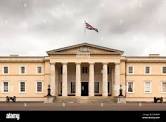
View On WordPress
#10 life lessons#book review#kamlesh tripathi#major general paul nanson#paul nanson#sandhurst#shravan charity mission#stand up straight
0 notes
Photo

The guys doing it again, but this time in #Sandhurst Customers are told it’s not possible to have a hard wired doorbell without it looking awful….. what do you think? #Ringdoorbell #customers #happy #hardwiredring #ringproinstaller #bselectrical #electricicaninSandhurst #electricianinReading #samedayquote #entrance #driveway #security #seeitherefirst #electrician #RingPro2 #RingProducts www.BSElectrical.co.uk (at Sandhurst, Berkshire) https://www.instagram.com/p/Ch-ZnRgsQ4f/?igshid=NGJjMDIxMWI=
#sandhurst#ringdoorbell#customers#happy#hardwiredring#ringproinstaller#bselectrical#electricicaninsandhurst#electricianinreading#samedayquote#entrance#driveway#security#seeitherefirst#electrician#ringpro2#ringproducts
0 notes
Text

#Tutoring Centre is the very best Educational Centre in Cranbourne. Our Tutors are Providing high quality education by Expert Tutors in Cranb#Lynbrook#Carrum downs#Lyndhurst#Sandhurst#Frankston#Skye#Beacon hills and Langwarrin.#tutoring centre cranbourne#lyndhurst#lynbrook#tutoring center#frankston#tutoring cranbourne#tutoring centre#best tutoring centres in cranbourne west#skye#math tutor
0 notes
Text

What does Underestimating Captain America have to do with Painful Unconsciousness?
About 10 minutes, generously.
#marvel#marvel comics#marvel universe#marvel heroes#superhero#comics#controller#basil sandhurst#captain america#steve rogers
106 notes
·
View notes
Text
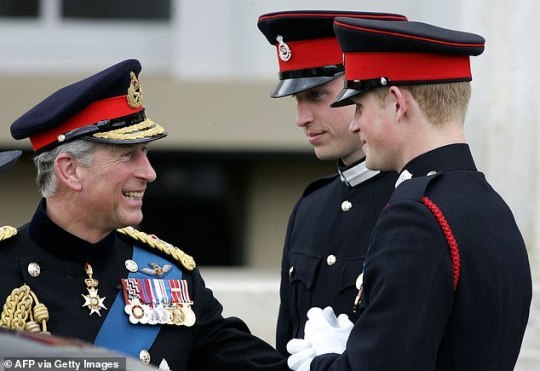
Happier times with King Charles and his sons at Sandhurst Academy
#King Charles#Prince William#Prince Harry#House of Windsor#Sandhurst Naval College#monarchy#brf#father & sons#UK
50 notes
·
View notes
Text
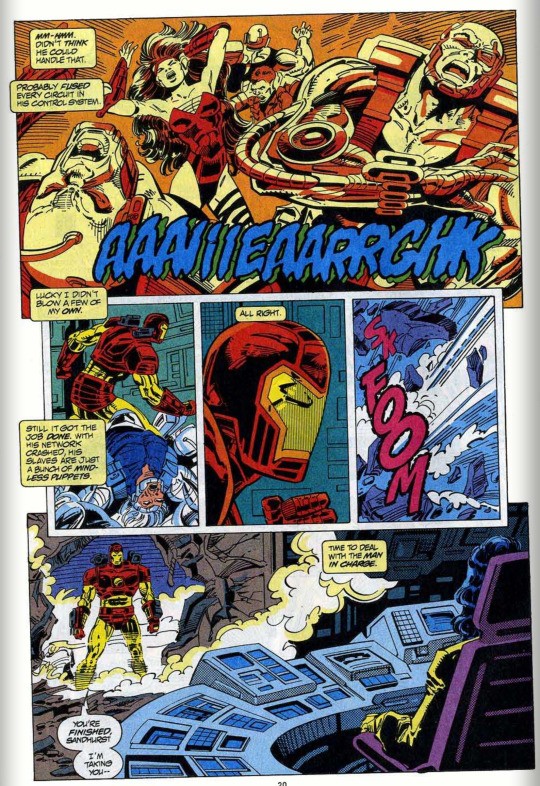


So handsome Controller was all part of another ruse... instead, we learn the last time Tony fought Controller he fried out his suit, it took life support with it and while they were able to save him, the damage was done and now he is stuck to life support systems to keep him alive... all of this was done to try and get the virus used on Tony but sadly that wouldn't even work, so instead Basil just makes Tony leave with some solid threats.
3 notes
·
View notes
Photo

Cover of the Day:
Iron Man #91 (October, 1976)
Art by Herb Trimpe, Aubrey Bradford, & Danny Crespi
#Marvel#Comics#Iron Man#Invincible Iron Man#Tony Stark#Controller#Basil Sandhurst#Krissy Longfellow#Whitney Frost
15 notes
·
View notes
